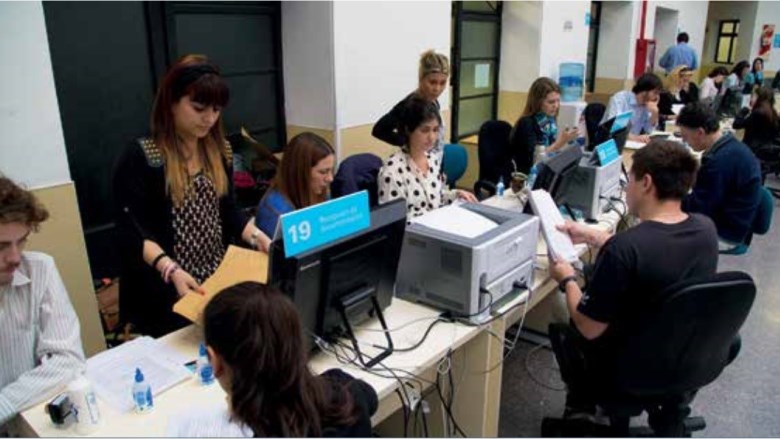Challenge
Argentina experienced dramatic progress after the 2001 financial crisis, but improvements in governance and public sector management remained essential to translate the recovery into sustainable economic and social development. The remaining challenges included short-term and strategic planning, limited monitoring of progress on national and subnational goals, inefficient back-office processes and procedures for procuring goods and services, limited provision of information on public services available online, and variable engagement with citizens on improving government services.
Solution
The World Bank-supported Second State Modernization followed the first State Modernization Technical Assistance Loan (approved in 1998). The project built on progress and lessons learned for incremental but impactful reforms, based on national ownership and alignment with government commitments, strategies and plans. Through the development of multiple dashboards to monitor performance, the Chief of Cabinet Office (CCO) was able to track progress across several federal agencies, while increasing the transparency and reliability of information between the agencies, Congressional decision-makers, and the public. E-government tools also increased the efficiency, accountability, and transparency of public sector management. For example, 38 national organizations launched Citizen Charters as public mechanisms for objective monitoring of service delivery, and five piloted Government-to-Citizen transactional services for improved accessibility across a range of public services. Institutional tools were based on agency demands, and designed for interoperability so that improvements could be replicated and scaled.
Results
The project strengthened public sector performance through improved coordination, monitoring, and evaluation. Improved performance monitoring tools (“dashboards”) were put in place to monitor public policies and projects, supporting the achievement of defined targets across Ministries, the national public administration, and in 18 jurisdictions. The Ministry of Labor, the National Institute against Discrimination, Xenophobia, and Racism (INADI), and the Social Security National Administration (ANSES) among others, are now using these tools to work more effectively. The dashboards are playing an important role in decision-making processes, driving improvements in public administration functioning and delivery of services to citizens.
Five piloted online public services enabled citizens to perform tasks online, in the areas of justice, social protection, and other services, particularly benefiting women and other disadvantaged groups. These e-government platforms lay the foundation for further automation to improve citizen access across a range of public services. A citizen-centered portal containing information on over 1,400 public services and procedures, received over 3.2 million visitors by June 2015, with high rates of user satisfaction.
The use of modernization tools enabled more efficient service delivery. For example, 76 agencies are now using digital signatures and over 70 percent of the national administration has implemented a digital system for more efficient and transparent procurement, moving towards an integrated, secure, and paperless administration.
Platforms for greater transparency, accountability, and citizen participation have been established. Over thirty national organizations are using citizens’ charters as tools to engage public monitoring of their performance, and to enhance the quality of delivery, reducing opportunities for corruption and promoting citizens’ awareness of their rights.
Bank Group Contribution
The World Bank contribution included a loan of US$ 22.22 million. In addition, the Bank was able to attract international experts and cutting-edge technology to the project.
Partners
The project benefitted from collaboration among key development partners working in public sector reform, including the United Nations Development Programme (UNDP) and the Inter-American Development Bank (IADB). Collaboration enhanced harmonization in key areas, such as institutional transparency and capacity building programs for public servants.
Moving Forward
The platforms created through the project, particularly through e-government, monitoring and evaluation, and social accountability tools, have enjoyed systematic and continuous use since the project’s closure. The focus on interoperability and scalability in their design has also enabled greater impact across Argentina’s national public administration.
Beneficiaries
The project strengthened the capacity of the Chief of Cabinet Office to fulfill its ambitious mandate to promote policy coordination and oversee reforms across Argentina’s national public administration. Other ministries and agencies, such as the National Investment Development Agency (ANDI), the Ministry of Labor, the Nuclear Regulatory Agency (ARN), and the Federal Tax and Customs Administration (AFIP) also benefited from state modernization support. Modernization of these institutions benefited citizens in general and the private sector through more efficient and effective public services and policies, creating a more conducive environment for sustained and inclusive growth.
